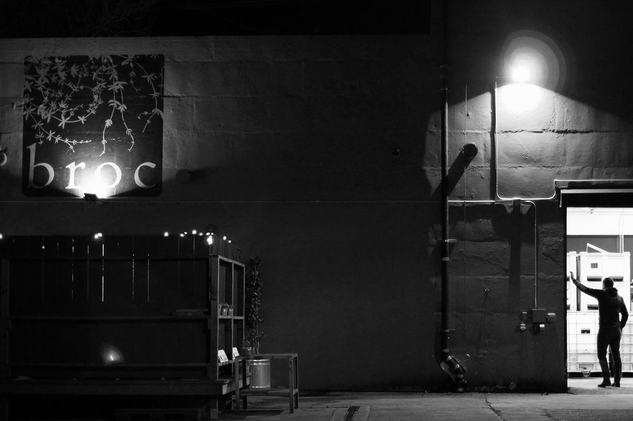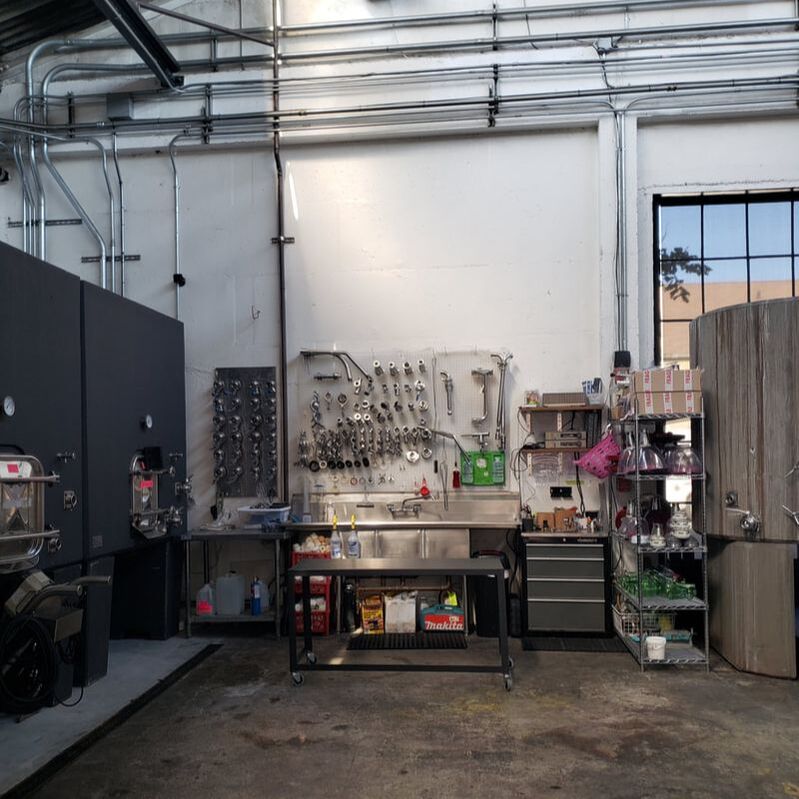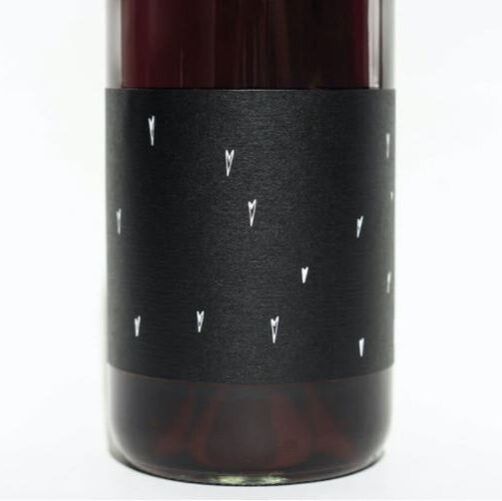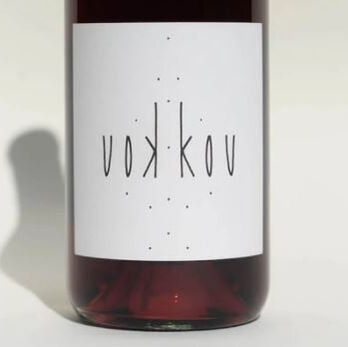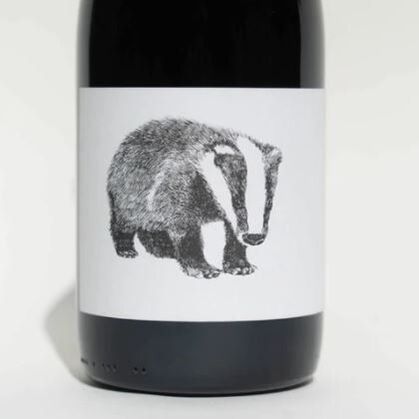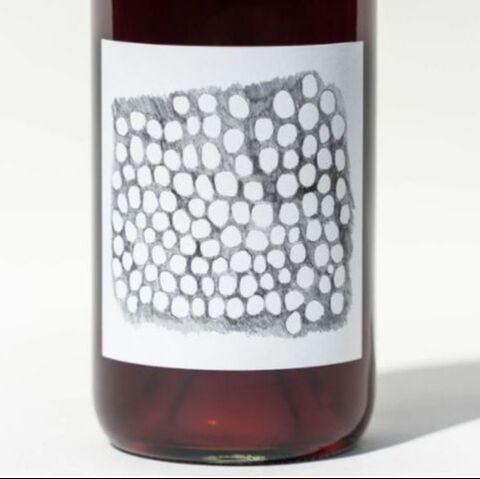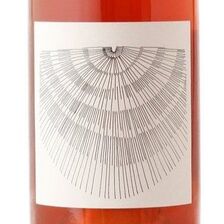Broc Cellars, Chris Brockway, Berkeley, California
AOC: Works with many vineyards in Solano County, Medocino County, Paso Robles, Madera County, Suisun Valley, and more.
Varieties: Virtually anything besides Cabernet Sauvignon and Merlot
Viticulture: Organic (some vineyards certified)
Size: A tiny warehouse in Berkeley
Production: Around 20,000 cases per year
Terroir: Sand, Clay, Loam, Volcanic, and many variations of these
Varieties: Virtually anything besides Cabernet Sauvignon and Merlot
Viticulture: Organic (some vineyards certified)
Size: A tiny warehouse in Berkeley
Production: Around 20,000 cases per year
Terroir: Sand, Clay, Loam, Volcanic, and many variations of these
Chris Brockway came to call Berkeley home (for his cellar anyways) by way of Omaha, Nebraska, where he was born and raised, Seattle, and finally Los Angeles, with a couple short stops in between. After graduating from the University of Nebraska, he began working in restaurants around the city before decamping to the Pacific Northwest, where he ultimately became interested in wine. After a friend joked that he should learn how to actually make it, he packed his things and enrolled in winemaking courses at UC Davis. Before finishing, he made the move to Cal State Fresno, which has its own functioning winery, and this is where he became an expert, as he says, in everything he does not use.
He finished his studies and quickly landed a job at JC Cellars, by all means a conventional winery. At the same time he began to frequent Terroir, San Francisco’s first natural wine bar, and began to think a lot about experimenting with the wines he liked to drink. And so, with a few small experiments, Broc Cellars was born.
His facility comprises two warehouses, one with multiple stainless steel, concrete, and wooden tanks, the other a dedicated barrel and concrete egg room. All fermentations are done with native yeasts, and for the most part he forgoes the use of sulfur. If needed, he will add a few milligrams about four weeks before bottling so that it fully integrates into the wine.
He finished his studies and quickly landed a job at JC Cellars, by all means a conventional winery. At the same time he began to frequent Terroir, San Francisco’s first natural wine bar, and began to think a lot about experimenting with the wines he liked to drink. And so, with a few small experiments, Broc Cellars was born.
His facility comprises two warehouses, one with multiple stainless steel, concrete, and wooden tanks, the other a dedicated barrel and concrete egg room. All fermentations are done with native yeasts, and for the most part he forgoes the use of sulfur. If needed, he will add a few milligrams about four weeks before bottling so that it fully integrates into the wine.
WINES
|
Love Sparkling Chenin: Petillant Natural -- the juice left on the skins overnight and pressed into stainless steel tank and then spends 7 months in bottle and disgorged by hand with no dosage.
|
Love White: 31% Marsanne | 24% Albariño | 18% Grenache Blanc | 15% Rousanne | 12% Picpoul. All varieties were fermented separately and then aged in neutral French oak barrels with no S02.
|
Love Rose: 85% Valdiguié | 14% Zinfandel | 1% Trousseau. The fruit was foot-stomped and left on the skins for 12 hours. We pressed into stainless steel tank where all three varieties fermented together just over 18-21 days.
|
Love Red: 52% Carignan, 42% Zinfandel, 6% Grenache Noir. The Love Red grapes are harvested early to highlight the fruit and preserve the acidity and fermented only by native yeasts. Fruit from the Wirth Ranch, Ricetti and Rosewood
|
|
Amore Rosso: 58% Dolcetto, 26% Montepulciano, 16% Sangiovese Dolcetto grapes were fermented whole cluster and aged in stainless steel. Montepulciano was made carbonic in stainless steel and aged in neutral French oak barrels. The Sangiovese
fermented whole cluster in stainless steel and aged in neutral French oak barrels. Blended all together before bottling to give you the Broc pizza wine! |
KOUKOU Cab Franc: 100% Cab Franc from Happy Canyon of Santa Barbara County. The grapes were brought in and placed whole cluster for 14 days in concrete tank to ferment with its native yeasts. Foot stomped in the morning and pumped over in the evening. Gently pressed back into concrete and aged for 10 months.
|
Broc Cellars Nero d'Avola: Nero d’Avola is a rare find in California these days, and this one pays homage to the classic wines of Sicily. From Fox Hill Vineyard in Mendocino, 100% destemmed. Fermented in clay vessels lined with beeswax. Pressed after fermentation and aged in a combination of clay and neutral French oak for 8 month
|
Wirth Zinfandel: 100% Zinfandel 80% whole cluster and 20% destemmed fruit on top in a 5 ton stainless steel open top fermenter and pumped over the juice twice per day. We aged the wine in 60 gallon neutral French Oak barrels for 10 months. Wirth Ranch’s Zinfandel is different from our Vine Starr – the vines are older, which produces a slightly more concentrated wine with more tannins.
|
|
Amore Bianco: 100% Tocai Friulano. We fermented the wine on the skins in two sandstone jars and direct pressed into one concrete egg and another sandstone jar to create this 2020 vintage. The juice on the skins in sandstone jars fermented and aged until January when we basket pressed. The juice went back into the sandstone jars to age for a few more months. All wine was fermented using only native yeasts, no sulfur was added during fermentation or at bottling, and the wine is left unfiltered showing its natural texture. It was aged for a total of 9 months.
|
Picpoul 2019: From the limestone-rich, nutrient poor windswept Luna Matta Vineyard in the western hills of Paso Robles, our late-ripening taut and concentrated Picpoul is a dramatic deference from your usual. Here, we present the unadulterated version, owing its expressive complexion not to a particularly noble grape variety, but a uniquely suited place just hospitable enough for most of the vines to survive and produce a few handfuls of grapes each year. Fermented entirely in concrete egg.
|
Petillant Valdiguie: The grapes for 2020 went direct to press whole cluster. We pressed into stainless steel tank and fermented the juice down to 18 grams of sugar. We chilled down the wine to stop fermentation and bottled. The bottles were left on their side for 11 months and lightly disgorged by hand with no dosage. Every bottle touches at least 5 different sets of hands in the cellar and while disgorging. It is a true labor of love making a petillant wine.
|
Michael Mara Chardonnay: pressed whole cluster and fermented in Stockinger Austrian oak puncheons. No sulfur at fermentation, aging or bottling. The Michael Mara vineyard is located just west of the town of Sonoma and at the base of the Sonoma Mountain range, Michael Mara Vineyard is planted on top of rocky lobe and red soil. It is truly a unique site for growing Chardonnay in California, with the fruit absorbing lots of the marine air from the site along with the minerality from the rocky soil. The vineyard was planted in 2006 by Steve Matthiasson and the Idell family. Farmed Organically.
|
|
Trousseau Noir: 100% Trousseau Noir that is destemmed and fermented in open top stainless fermenters. After pressing, we moved the wine into one of our 1200L sandstone jars and three neutral French oak barrels to age for 9 months. This wine is unfiltered.
|
White Zinfandel: In the cellar, after the Arrowhead grapes arrived, we foot stomped whole cluster and left the grapes to macerate for 4 hours. Then we pressed into stainless tank where it fermented for 10 days and transferred to our 4400 liter stainless tank for 8 months. The Ricetti Vineyard’s Zinfandel was brought in and made as a light red wine, whole cluster. The small amount added to the Arrowhead base gives the wine its structure.
|
Nouveau: 100% Valdiguié. This year’s nouveau comes from a small amount of Valdiguié grapes that we picked intending to
make rosé but turned it into a bright high acid red. Two thirds of the fruit we left as whole clusters and the remaining was destemmed and placed on top of the whole clusters as they fermented in tank. A small amount of carbonic takes place from the whole clusters. Aged in neutral French oak for 6 weeks. Bottled unfiltered and ready to drink now |
Old Vine Carignan: 85% Carignan | 10% Alicante Bouschet | 4% Zinfandel | 1% Palomino -- whole clusters in concrete tanks bottled after 8 months of aging. An original field-planted block, these Carignan plants are interspersed with Palomino (white variety from Jerez), Zinfandel and Alicante (a rare black-fruited vine that produces some of the darkest juice on the planet). Its decomposed sandy soils make it impossible for the vine-pest phylloxera to survive, leaving these some of the last remaining self-rooted vines in the state
|
PAST CUVEES
Broc Cellars Chenin Blanc
Chenin Blanc from Solano County’s Green Valley, vines planted in the 1960s. Fermented and aged in 600L foudre, with a bit of SO2 at bottling.
Broc Cellars Paso Robles Chenin Blanc
From the Shell Creek Vineyard in Paso Robles, vines planted in 1972, sandy soils with fossilized seashells underneath. It is pressed into a combination of 500L Stockinger foudre and neutral barrique for fermentation, before racking and élevage in neutral barrique for nine months.
Broc Cellars Carbonic Carignan
Carignan from 130+-year-old vines in Alexander Valley, along with Alicante Bouschet, Zinfandel, and Palomino. True carbonic maceration in concrete tanks, eight months élevage in concrete and neutral barrique before bottling. Deep and savory, yet lifted.
Broc Cellars Vine Starr Zinfandel
From two distinct parcels, one in Sonoma Valley, the other in the Russian River Valley, both planted on volcanic soils. De-stemmed and fermented in a combination of stainless steel and concrete tank; aged in neutral barrique for 10 months before bottling. A serious bottle of Zinfandel that exudes freshness and balance.
Broc Cellars Counoise
Counoise from vines planted on Eagle Point Ranch (now certified organic) at 2000ft in elevation. Fermented in tank, then racked to neutral barrique for one year before bottling. One year of aging in bottle before release.
Broc Cellars Cuvée 11.9 2014
Syrah vines planted in 2000 in the Santa Lucia Highlands. Partial carbonic maceration in tank.
Broc Cellars Valdiguié Wirth Vineyard
Single-vineyard Valdigué from the steep, iron-rich Wirth Vineyard in Solano County. Vines were planted in 1950. Darker, more concentrated fruit.
Broc Cellars Valdiguié
Called Napa Gamay for the longest time, it wasn’t until a lab test revealed it’s true identity. 60+-year-old vines in both Frei (acidic soils) and Wirth Vineyard (steep, iron-rich slopes) in Solano County’s Green Valley, just southeast of Napa. Partial carbonic maceration in tank.
Broc Cellars Arrowhead Mtn. Zinfandel
Sourced entirely from the Arrowhead Mountain Vineyard in the Russian River Valley and vinified similarly to the Vine Starr Zinfandel. Very small quantities of this wine were made.
Chenin Blanc from Solano County’s Green Valley, vines planted in the 1960s. Fermented and aged in 600L foudre, with a bit of SO2 at bottling.
Broc Cellars Paso Robles Chenin Blanc
From the Shell Creek Vineyard in Paso Robles, vines planted in 1972, sandy soils with fossilized seashells underneath. It is pressed into a combination of 500L Stockinger foudre and neutral barrique for fermentation, before racking and élevage in neutral barrique for nine months.
Broc Cellars Carbonic Carignan
Carignan from 130+-year-old vines in Alexander Valley, along with Alicante Bouschet, Zinfandel, and Palomino. True carbonic maceration in concrete tanks, eight months élevage in concrete and neutral barrique before bottling. Deep and savory, yet lifted.
Broc Cellars Vine Starr Zinfandel
From two distinct parcels, one in Sonoma Valley, the other in the Russian River Valley, both planted on volcanic soils. De-stemmed and fermented in a combination of stainless steel and concrete tank; aged in neutral barrique for 10 months before bottling. A serious bottle of Zinfandel that exudes freshness and balance.
Broc Cellars Counoise
Counoise from vines planted on Eagle Point Ranch (now certified organic) at 2000ft in elevation. Fermented in tank, then racked to neutral barrique for one year before bottling. One year of aging in bottle before release.
Broc Cellars Cuvée 11.9 2014
Syrah vines planted in 2000 in the Santa Lucia Highlands. Partial carbonic maceration in tank.
Broc Cellars Valdiguié Wirth Vineyard
Single-vineyard Valdigué from the steep, iron-rich Wirth Vineyard in Solano County. Vines were planted in 1950. Darker, more concentrated fruit.
Broc Cellars Valdiguié
Called Napa Gamay for the longest time, it wasn’t until a lab test revealed it’s true identity. 60+-year-old vines in both Frei (acidic soils) and Wirth Vineyard (steep, iron-rich slopes) in Solano County’s Green Valley, just southeast of Napa. Partial carbonic maceration in tank.
Broc Cellars Arrowhead Mtn. Zinfandel
Sourced entirely from the Arrowhead Mountain Vineyard in the Russian River Valley and vinified similarly to the Vine Starr Zinfandel. Very small quantities of this wine were made.

